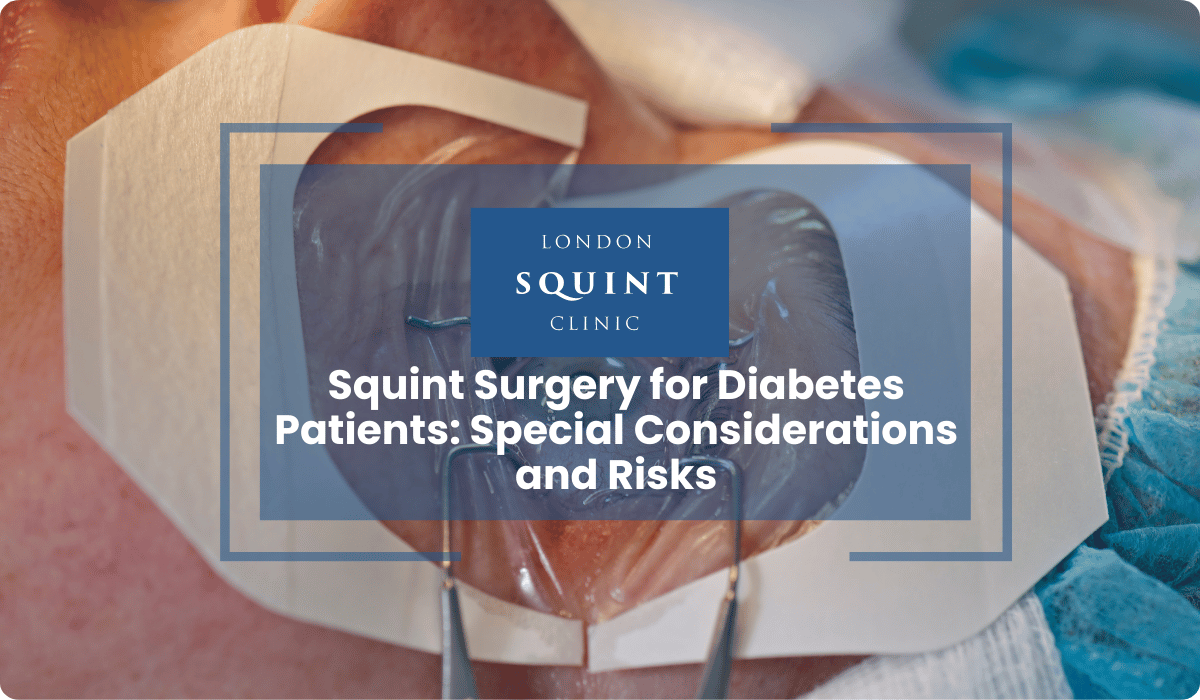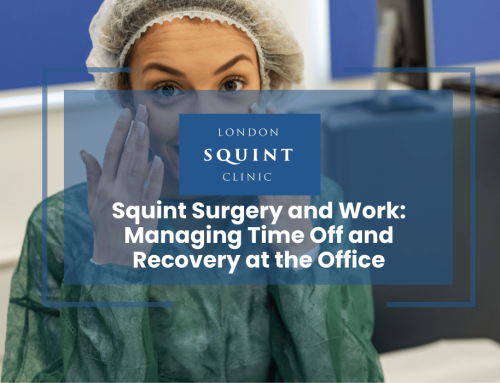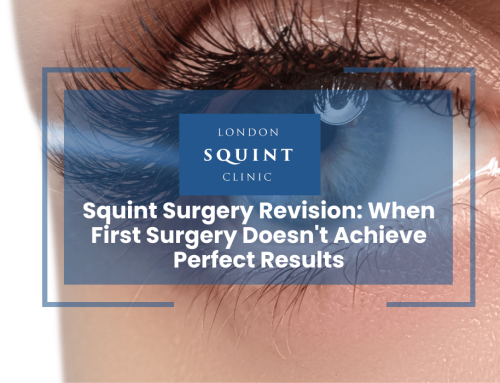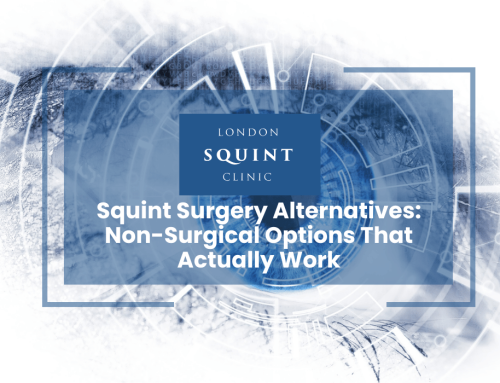Squint Surgery for Diabetes Patients: Special Considerations and Risks
Managing Diabetes and Squint Surgery: Key Considerations
- Diabetes can contribute to the development or worsening of squint, and its management is crucial for successful squint surgery outcomes.
- Thorough preoperative assessment, including evaluation of blood sugar control and co-existing eye conditions, is essential for determining candidacy for squint surgery in diabetic patients.
- Maintaining stable blood glucose levels before, during, and after surgery is critical for reducing the risk of complications and promoting optimal healing.
- Surgical techniques and anaesthesia choices may be modified to account for the unique challenges posed by diabetes.
- Close postoperative monitoring, adherence to care instructions, and prompt management of any complications are vital for ensuring the best possible outcomes for diabetic patients undergoing squint surgery.
- Long-term follow-up care, including regular comprehensive eye exams and ongoing diabetes management, is essential for maintaining eye health and preventing future complications.
Here is the blog post content with the specified sections and formatting:
Table of Contents
- Understanding the Link Between Diabetes and Squint
- How Diabetes Affects Eye Health and Vision
- Assessing Candidacy for Squint Surgery in Diabetic Patients
- Preoperative Precautions and Blood Sugar Management
- Surgical Techniques and Modifications for Diabetic Eyes
- Postoperative Care and Monitoring for Optimal Healing
- Potential Complications and Risk Mitigation Strategies
- Long-term Outlook and Follow-up Care for Diabetic Patients
Understanding the Link Between Diabetes and Squint
Diabetes is a chronic metabolic disorder that can have far-reaching effects on various systems of the body, including the eyes. Patients with diabetes are at an increased risk of developing certain eye conditions, such as diabetic retinopathy, cataracts, and glaucoma. In some cases, diabetes can also contribute to the development or worsening of a squint, also known as strabismus. Understanding the complex relationship between diabetes and squint is crucial for effective management and treatment.
How Diabetes Affects Eye Health and Vision
Diabetes can have a significant impact on eye health and vision. High blood glucose levels can damage the delicate blood vessels in the retina, leading to a condition called diabetic retinopathy. This can cause vision loss, blurred vision, and even blindness if left untreated. Diabetes also increases the risk of developing cataracts, which cause the lens of the eye to become cloudy, and glaucoma, which damages the optic nerve. These conditions can further complicate the management of squint in diabetic patients.
Assessing Candidacy for Squint Surgery in Diabetic Patients
When considering squint surgery for diabetic patients, a thorough assessment of their overall health and eye condition is essential. Ophthalmologists will evaluate the severity of the squint, the presence of any co-existing eye conditions, and the patient’s blood sugar control. Patients with poorly controlled diabetes or advanced diabetic retinopathy may not be suitable candidates for squint surgery until their condition is stabilised. The decision to proceed with surgery will be made on a case-by-case basis, weighing the potential benefits against the risks.
Preoperative Precautions and Blood Sugar Management
Before undergoing squint surgery, diabetic patients must take special precautions to ensure optimal outcomes and minimise the risk of complications. One of the most critical aspects is maintaining good blood sugar control in the weeks leading up to the surgery. Patients should work closely with their endocrinologist or diabetes specialist to monitor their blood glucose levels and adjust their medication or insulin regimen as needed. Stable blood sugar levels can help reduce the risk of infection, delayed wound healing, and other complications associated with diabetes.
Surgical Techniques and Modifications for Diabetic Eyes
Squint surgery for diabetic patients may require specific techniques and modifications to account for the unique challenges posed by diabetes. Surgeons may need to use finer sutures and take extra care when manipulating the delicate eye tissues to minimise trauma and reduce the risk of bleeding. In some cases, adjustable suture techniques may be employed to allow for postoperative fine-tuning of the eye alignment. The choice of anaesthesia may also be influenced by the patient’s diabetic status, with local anaesthesia often preferred to minimise the risk of complications associated with general anaesthesia.
For more information on the general process of squint surgery, please see our page on Understanding Squint Surgery.
Postoperative Care and Monitoring for Optimal Healing
After squint surgery, diabetic patients require close monitoring and specialised postoperative care to ensure optimal healing and reduce the risk of complications. Patients will need to follow strict instructions regarding eye care, medication use, and activity restrictions. Regular follow-up appointments with the ophthalmologist will be necessary to monitor the healing process, assess the alignment of the eyes, and check for any signs of infection or other complications. Patients should also continue to work with their diabetes care team to maintain good blood sugar control during the recovery period.
Potential Complications and Risk Mitigation Strategies
Diabetic patients undergoing squint surgery may be at a higher risk of certain complications compared to non-diabetic patients. These can include delayed wound healing, infection, bleeding, and even vision loss in severe cases. To mitigate these risks, patients and their healthcare team must work together to optimise blood sugar control, follow proper pre- and postoperative care instructions, and promptly address any signs of complications. Patients should be educated on the warning signs of infection, such as redness, swelling, discharge, or worsening pain, and advised to seek immediate medical attention if any of these symptoms occur.
Long-term Outlook and Follow-up Care for Diabetic Patients
The long-term outlook for diabetic patients who undergo squint surgery depends on various factors, including the severity of their diabetes, the presence of other eye conditions, and their adherence to postoperative care and follow-up. While the surgery can effectively correct the misalignment of the eyes and improve vision, diabetic patients may require ongoing monitoring and management of their eye health. Regular comprehensive eye exams, including dilated fundus examinations, are crucial for detecting and treating any diabetes-related eye complications that may arise over time. Patients should also maintain good blood sugar control and adopt a healthy lifestyle to minimise the risk of future eye problems.
Frequently Asked Questions
Is squint surgery safe for diabetic patients?
Squint surgery can be safe for diabetic patients when performed under the close supervision of an experienced ophthalmologist and with proper preoperative preparation and postoperative care. However, diabetic patients may face a higher risk of certain complications, such as delayed wound healing and infection, compared to non-diabetic patients. Careful assessment of the patient’s overall health and blood sugar control is essential before proceeding with surgery.
How does diabetes affect the success of squint surgery?
Diabetes can affect the success of squint surgery in several ways. Poorly controlled blood sugar levels can increase the risk of complications, such as infection and delayed wound healing, which may compromise the surgical outcome. Additionally, the presence of other diabetes-related eye conditions, such as diabetic retinopathy, can make the surgery more challenging and may limit the extent of correction that can be achieved.
What precautions should diabetic patients take before squint surgery?
Before undergoing squint surgery, diabetic patients should take several precautions to optimise their health and minimise the risk of complications. These include:
- Maintaining good blood sugar control in the weeks leading up to the surgery
- Working closely with their endocrinologist or diabetes specialist to adjust medication or insulin regimen as needed
- Informing their ophthalmologist about their diabetic status and any other health conditions or medications
- Following all preoperative instructions provided by their healthcare team
How long does it take for diabetic patients to recover from squint surgery?
The recovery time for diabetic patients after squint surgery may be longer compared to non-diabetic patients. While individual experiences may vary, diabetic patients should expect a gradual recovery process that may take several weeks to a few months. Factors such as the patient’s age, overall health, and the complexity of the surgery can influence the recovery timeline. Patients should follow their ophthalmologist’s postoperative instructions carefully and attend all follow-up appointments to ensure optimal healing.
Can squint surgery improve vision for diabetic patients?
Squint surgery can improve vision for diabetic patients by correcting the misalignment of the eyes and restoring binocular vision. However, the extent of vision improvement may depend on various factors, such as the severity of the squint, the presence of amblyopia (lazy eye), and the overall health of the eyes. In some cases, additional treatments, such as vision therapy or glasses, may be necessary to achieve the best possible visual outcomes.
How often should diabetic patients have follow-up appointments after squint surgery?
Diabetic patients should have regular follow-up appointments with their ophthalmologist after squint surgery to monitor the healing process and address any concerns or complications that may arise. The frequency of these appointments may vary depending on the patient’s individual needs and the surgeon’s recommendations. Typically, patients will have several follow-up visits within the first few weeks after surgery, followed by less frequent check-ups over the following months. Long-term follow-up care is essential for diabetic patients to maintain eye health and detect any diabetes-related eye complications early on.
Find out if you are suitable for Double Vision Treatment
Not everyone is eligible for double vision surgery.
Find out if you could benefit from this life-changing surgery by taking the quick self-suitability quiz below:
Our most popular procedures

Hello, I’m Nadeem Ali
I’m one of the few eye surgeons in the world with 100% focus on Squint and Double Vision Surgery.
I have 24 years of eye surgery experience, and worked for 13 years as a Consultant at London’s renowned Moorfields Eye Hospital.
In 2023, I left the NHS to focus fully on treating patients from across the world at the London Squint Clinic. You can read more about me here.
There’s lots of information on the website about: squint surgery, double vision surgery and our pricing.
The most rewarding part of my job is hearing patients tell me how squint or double vision surgery has changed their lives. You can hear these stories here.
Mr Nadeem Ali
MA MB BChir MRCOphth FRCSEd(Ophth)





